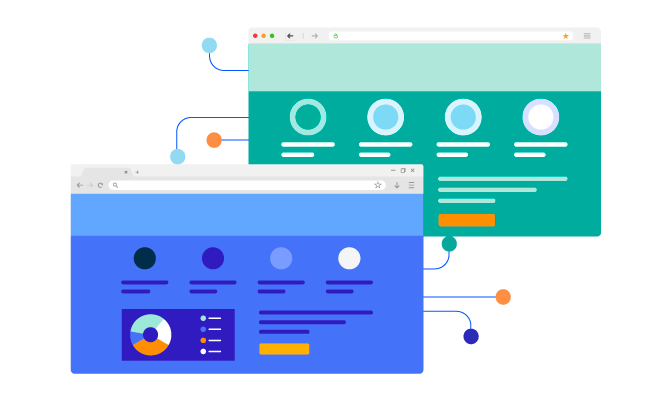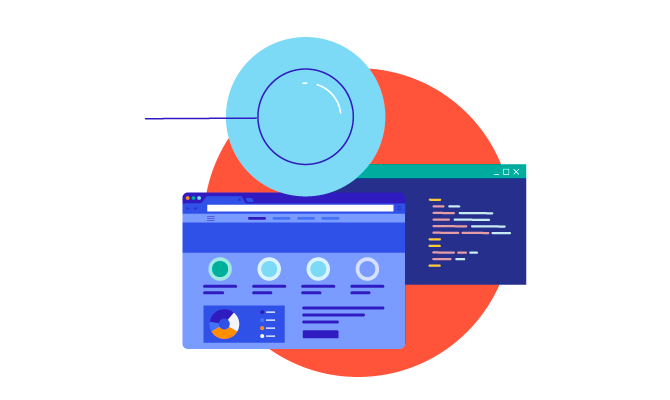Get Started With Cross Browser Testing

Cross browser testing helps your team maintain high-quality web applications. Read why it’s an essential skill for anyone developing a web application and discover some tools that will get you up and running with automated cross browser testing—even if you don’t have any coding skills.
Thanks to advancements with software and hardware for the internet, building robust web applications is rapidly becoming the standard way to develop and deliver software. One of the main benefits of creating a web application is that it provides instant access to anyone with internet connectivity and a device with a browser. According to a report by Hootsuite and We Are Social, almost 60% of the world’s population has access to the internet. Any organization nowadays has unprecedented access to a wide range of potential customers across the globe.
With that extensive reach through the internet comes a few drawbacks, though. Given the multitude of ways that the world’s population uses the internet, your web application likely won’t work the same for every person. The reasons for your application behaving incorrectly range from low-powered devices to the inadequate network infrastructure in some areas. However, the primary culprit is often the main portal to your application—the web browser.
Browsers have become more consistent in how they render web applications. We’ve come a long way from the days where web developers almost had double the work thanks to the sometimes contradicting behavior between web browsers. Still, different devices and browser versions—even minor ones—can cause your app not to work well or not work at all for a segment of your user base.
Organizations focusing on web development must ensure their applications work well for most who will access the app. That’s where cross browser testing comes into the picture.
What Is Cross Browser Testing?

As the name suggests, cross browser testing is the function of testing a website or web application across various browsers to ensure it works as intended. The practice of cross browser testing goes beyond simply loading a site or app in different browsers. This type of testing includes validating the functionality with devices and operating systems and verifying how a website or application works under different scenarios that can occur in the real world, such as slow internet accessibility and underpowered equipment.
The primary purpose of conducting cross browser testing is to ensure that most users don’t experience issues when trying to access your web application. Different versions of a browser, device or operating system can expose inconsistencies in your web application. Some problems are minor inconveniences, like a misaligned text field. However, some issues can make your app unusable, like a JavaScript error that prevents the site from loading altogether.
While it’s nearly impossible to test every possible combination of browser, operating system, device and scenario, it’s still worth the time to validate your web app across the most commonly used web browsers and devices like PCs and smartphones. Since your customers are typically the ones who will run into these problems, you’re likely losing customers and business if you’re not performing cross-browser checks regularly.
How To Perform Cross Browser Testing
Most teams handle cross-browser testing in two ways: with manual testing and with automated tests.
Can Cross Browser Testing Be Performed Manually?
Yes, manual testing across browsers is certainly possible. For manual testing, an organization can have a few members of a QA team load up their web applications on different systems and browsers. They go through various test scenarios to verify that the app works as intended no matter where or under which conditions it’s accessed. Some teams follow a script or have a series of test cases that they go through, while others do more exploratory testing without a set plan.
Manual testing helps keep a high level of quality for your web applications. However, it can take a lot of time to complete for more extensive apps and can be prone to human error. Plus, no one wants to perform the same mundane, repetitive tasks over and over every single day. After a while, this work takes a mental toll on testers, leading to bugs slipping through the cracks.
Automating Cross Browser Tests
With automated testing, teams can eliminate the boring parts of manual testing. By leveraging tools that automatically go through the same scenarios, automated cross browser testing bypasses the repetitious work of manual testing and free up QA to perform other kinds of high-value work to get the most out of your team’s testing time.
The downside of automated testing is that the scripts can only reveal issues in their area of coverage. If your web application doesn’t have any automated tests going through certain parts of the application, bugs can remain uncovered in those sections until someone stumbles upon them. Automated tests also usually do only what they’re told, eliminating the benefits of exploratory testing that a human tester brings to the table.
The Best Approach Is Both
Which strategy should your team take for cross browser testing? Some teams prefer going all in either manual or automated testing but the ideal approach is a mix of both. Start with manual, exploratory testing to determine the sections with high risk and importance to the business—the areas where your organization stands to lose customers or money if they stop working. With a list of test scenarios to guide you, begin sprinkling in automated tests to handle the most critical and tedious test cases. This balanced plan will give you the best of both worlds.
Ways To Build a Cross Browser Test Suite

Testers have different options for creating cross browser test suites. Documenting scenarios can help QA establish the various test cases needed for manual testing purposes and which browsers to target. The documentation can be as formal as a test plan defined at the start of a new project or as informal as a shared spreadsheet that anyone can modify.
For teams going the automated route, software developers and QA engineers can code a fully functional cross browser test suite, provided the team has the technical ability to perform this task. These tests serve as functional code to execute the actions needed to validate a web application and provide documentation and reporting for stakeholders in the organization, both technical and non-technical.
Teams with limited programming knowledge aren’t left behind when it comes to automating tests, however. A growing segment of the QA world is the rise of low-code or codeless testing tools. These tools allow anyone to easily create automated tests without any coding experience, like recording the steps taken in a web application and replaying it in the future.
Top 5 Cross Browser Testing Tools
These days, there’s no shortage of excellent tools to get started with cross browser testing. Here are a few great choices if you’re looking to get started on a low-code/codeless testing environment:
Test Studio
Test Studio by Telerik is a Windows-based testing application covering desktop and web applications. It provides a full suite of tools with different kinds of automated testing, including web application test recording, cross browser testing and automating test runs with multiple browsers like Internet Explorer, Firefox, Safari and Chrome.
Ghost Inspector
Ghost Inspector is an online service that captures recorded actions and assertions of a web application through a browser extension, which it then executes on its servers. Currently, the service is available only for Chrome and Firefox.
TestCafe Studio
TestCafe Studio by DevExpress is a cross platform tool powered by TestCafe, an open-source framework focused on end-to-end testing for web applications. It supports most major browsers, including browsers for mobile devices, with almost no configuration required.
Selenium IDE
Selenium IDE is a recording and playback tool based on the widely used Selenium testing framework. Like Ghost Inspector, Selenium IDE works as a browser extension for Chrome or Firefox and provides a ready-to-use IDE to test your web application.
Katalon Studio
Katalon Studio is a cross platform testing tool that uses Selenium under the hood for executing web application tests. Out of the box, it supports test recording functionality across most major browsers.
Should You Always Record Your Cross Browser Tests?

Many testing teams have concerns about whether they should rely on low-code/codeless testing tools to record their cross browser tests or if they should code them from the ground up. Both options work well, depending on your team and organizational needs.
As mentioned earlier, teams with fewer technical resources on hand can get started quickly with a low-code or codeless solution. The benefit of this strategy is that anyone can fire up the web browser and record a helpful test that the tool can replay to ensure the application behaves as expected. These tools also work great for websites and web applications with low complexity, where you don’t need a large, robust test suite.
However, as your web application and cross browser test suite expand, these tools will probably begin to show signs of growing pains. Depending on the low-code/codeless service used, you might start to get bogged down by limitations of the tool. For instance, it may become challenging to reuse common steps or handle complex UIs or find specific selectors on a page. In those cases, coding will often improve the testing experience by allowing testers to refactor and organize test cases in more efficient ways than an IDE can.
It doesn’t mean that low-code and codeless tools will always hit these kinds of limitations, though. Most modern low-code/codeless testing tools allow editing the tests in different ways, letting testers record their tests and access the underlying code for any necessary modifications. When seeking a low-code or codeless testing tool, the ability to switch between both modes effortlessly should be a key factor to guide your decision.
Regardless of the tool of choice, the important thing is to make sure you have some cross browser test coverage for your web applications. It will make development easier by detecting issues quicker and making sure your customers have a smooth experience.

Dennis Martinez
Dennis Martinez is a freelance automation tester and DevOps engineer living in Osaka, Japan. He has over 19 years of professional experience working at startups in New York City, San Francisco, and Tokyo. Dennis also maintains Dev Tester, writing about automated testing and test automation to help you become a better tester. You can also find him on LinkedIn and his website.
